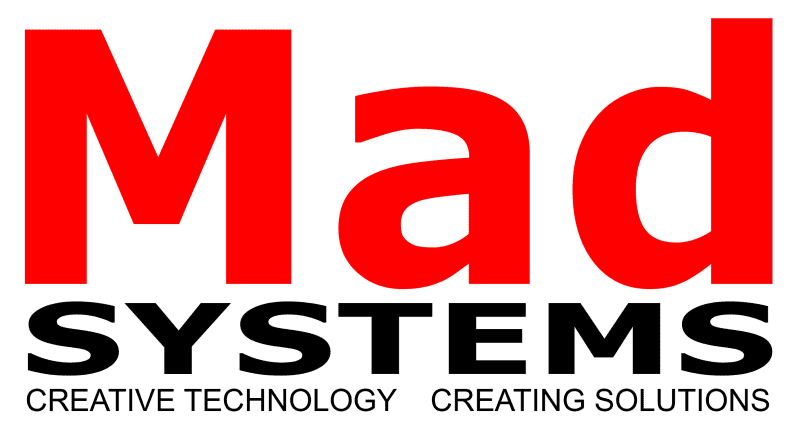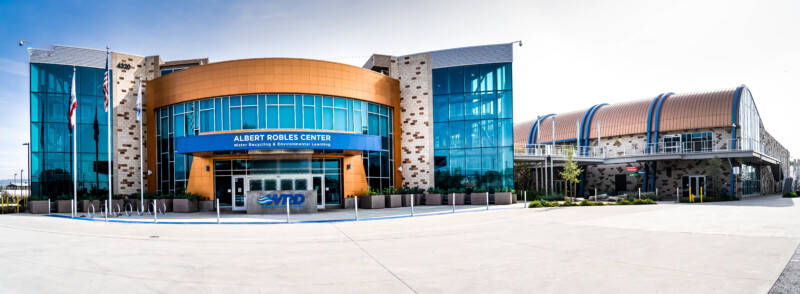The Albert Robles Center for Water Education is a LEED Platinum facility where the visitor center is based on Mad’s wireless QuickSilver® system. With a total of around 50 exhibits, this is the first facility in the world where the only printed graphics is the wall paper.
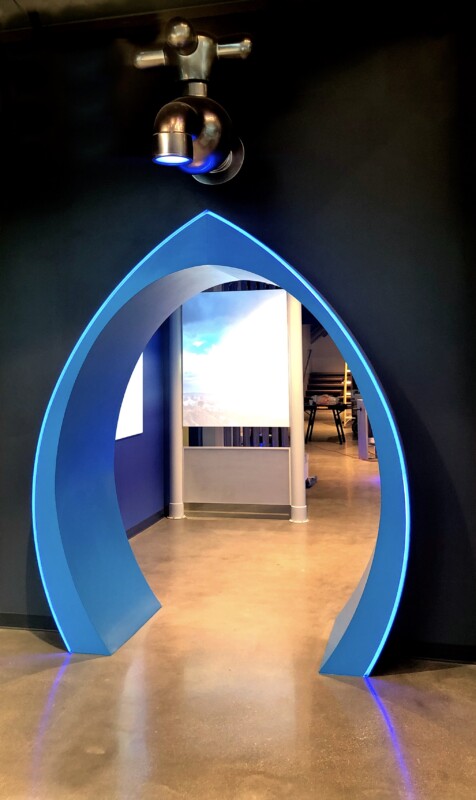
The entry into the water education center is, appropriately, through a water drop falling from a tap. The first exhibits show the client’s mission statement, and a collage of image of the area covered by the Water Replenishment Board (WRD), who are responsible for the ground water below Los Angeles, that provide drinking water for 43 cities and over 4 million consumers. Since all graphic panels are projected, it is easy to change languages, and to change content should the client want to do so. The system is also ready to be taken a lot further: the design allows for upgrade to personalize media at each and every station using RFID or similar technology as well as our patented facial recognition based media delivery.
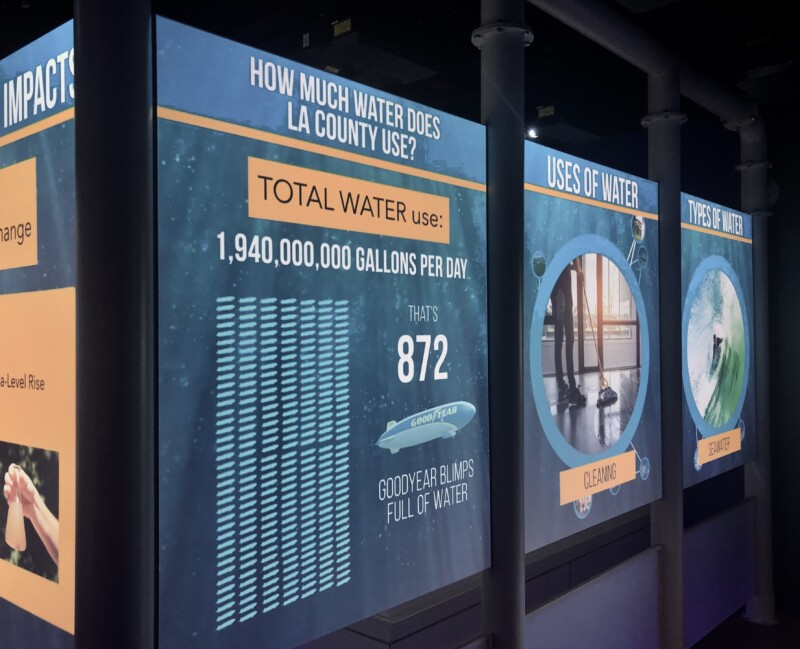
As visitors walk into the space, they find a host of hands-on exhibits related to WRD’s story including a water cycle exhibit that allows kids to use air pumps to get water up into the ‘clouds’ where it accumulates into the overhead rain tank before raining down onto a model combining the Los Angeles skyline with Pico Rivera, where the center is located.
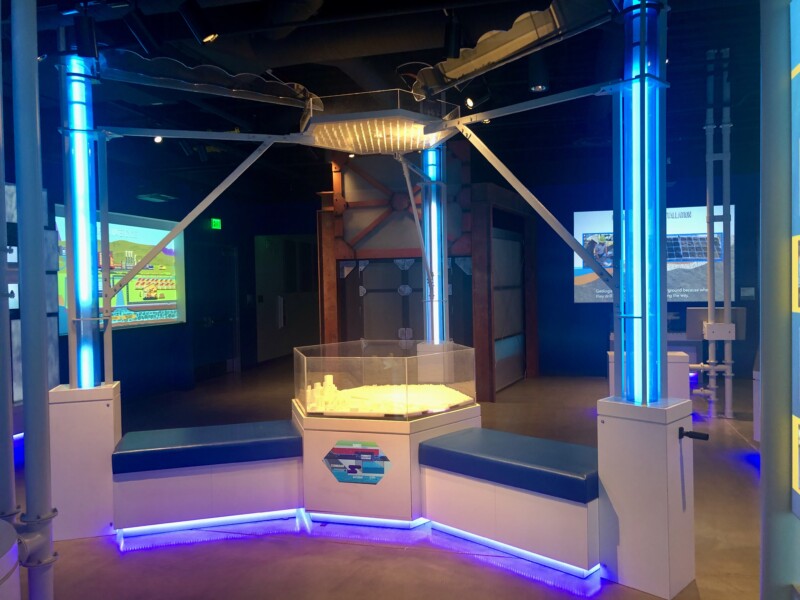
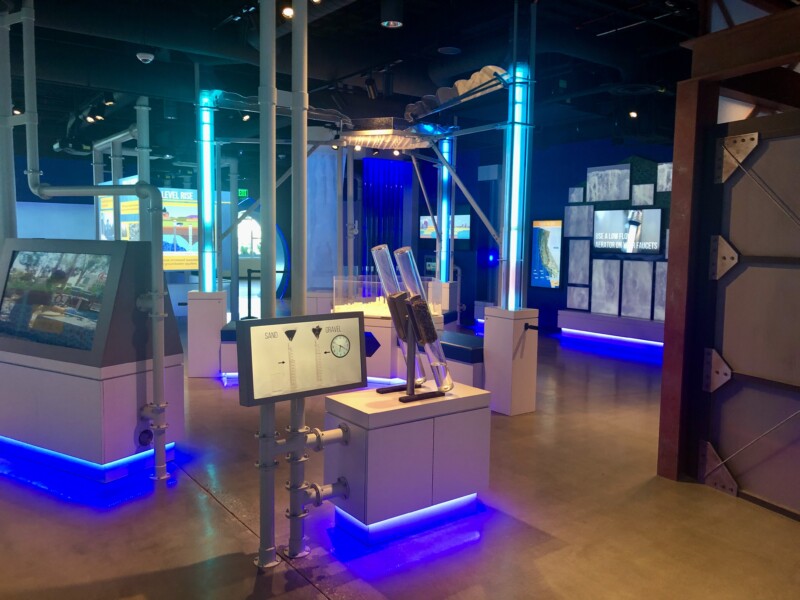
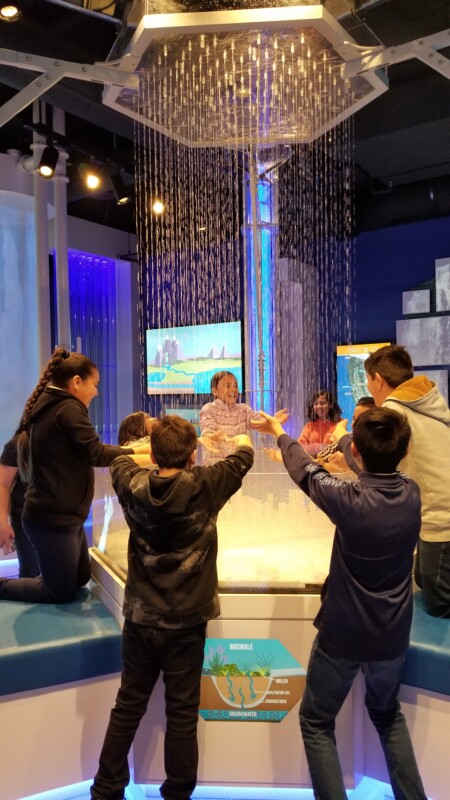
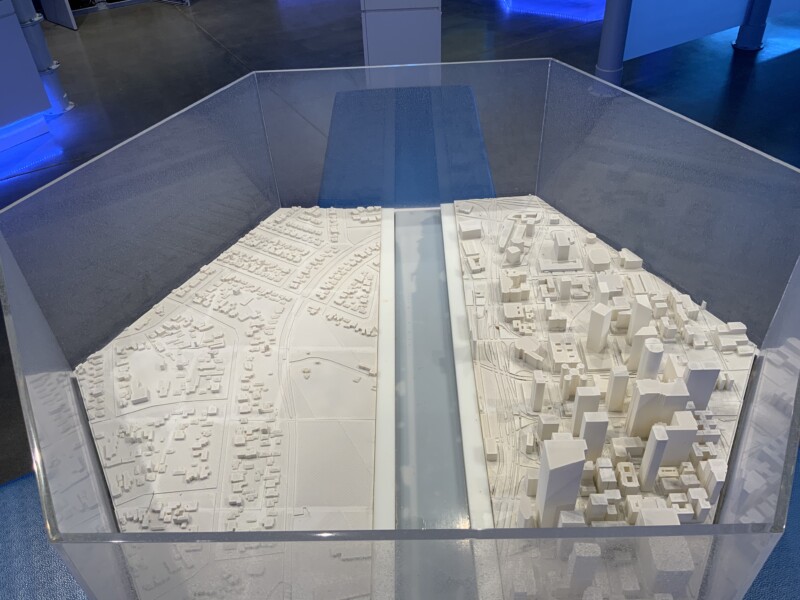
Other exhibits in the space include a hands-on monitoring well, where a WRD monitoring well sampling team takes kids through the process of taking water samples which are then taken to the lab to be evaluated.
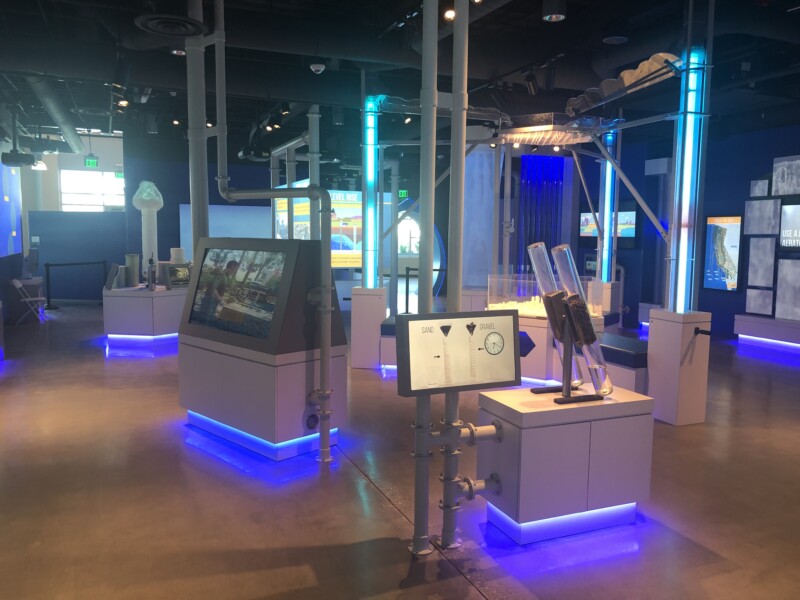
The Aquivator takes kids into the aquifers below Pico Rivera, and the trip turns into quite an adventure when the new-fangled underground traveler encounters some trouble underground.
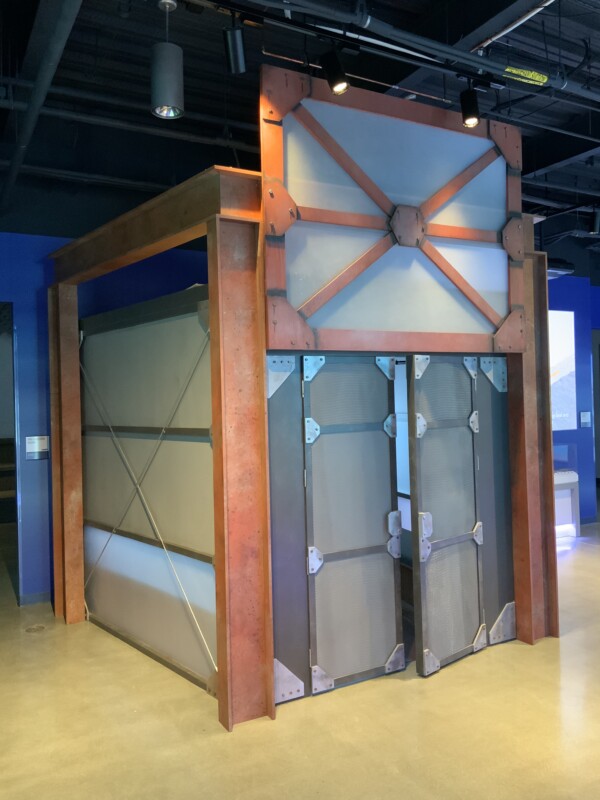
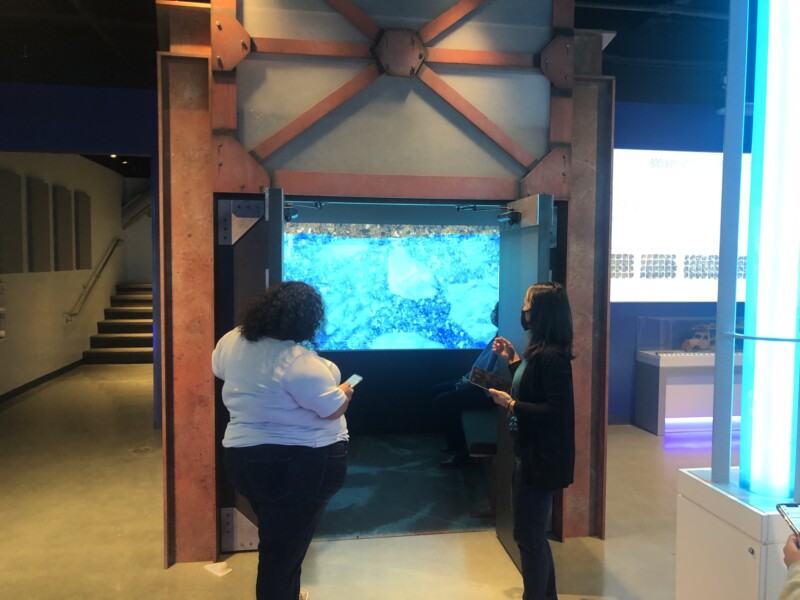
A 24′ wide touchscreen explains a diagram of the aquifers and aquitards, shows how the water in the aquifers is replenished, and how it is retrieved to be turned into drinking water for people living in Los Angeles.
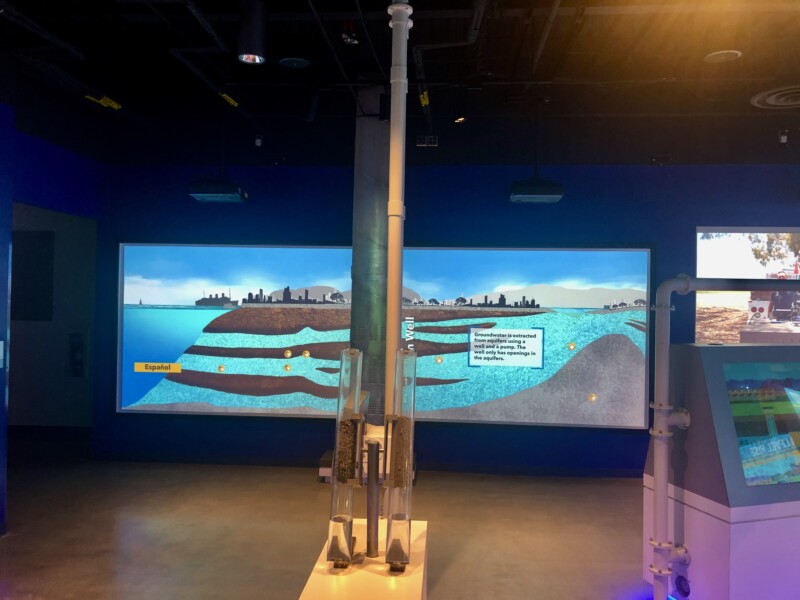
Another hands-on station has WRD staff showing kids how to take water samples from a monitoring well, following their instructions with the real equipment from a “monitoring well” in the education center.
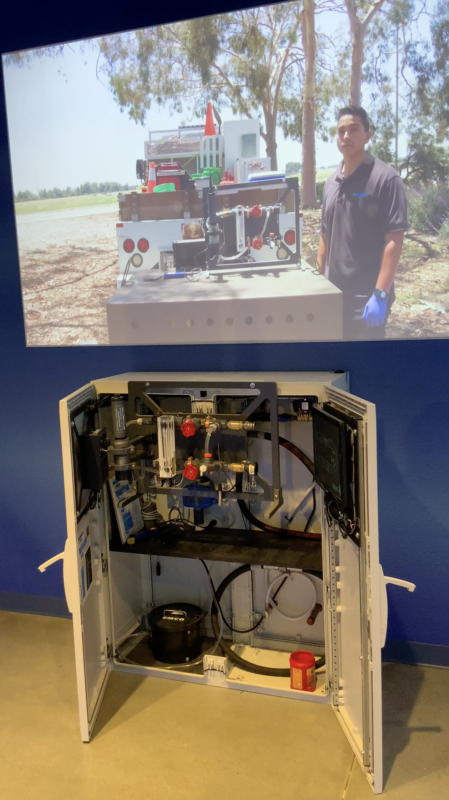
A projected topographical map of Los Angeles shows information related to WRDs service area, their wells and a host of other information.
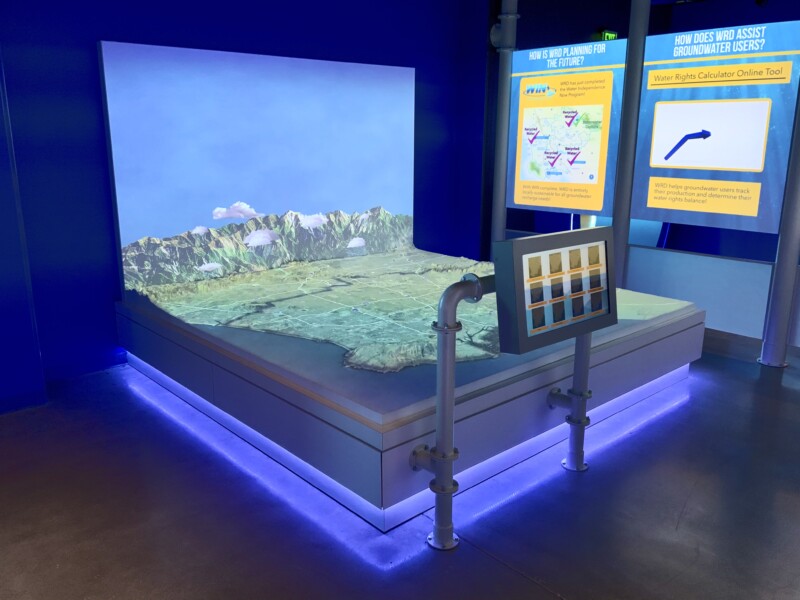
The next part of the visit takes visitors to three overlooks from where they see the processing plant before moving into the ‘Tasting Room’, where they can taste the end product that the plant produces: water that is well beyond the standard required for drinking water, ready to be pushed back into the aquifers to supply water to the thirsty customers in LA. The tasting room has an incredible copper tubing based sculpture, with four glass tables that each have a different brass and bronze ‘fellow’ that visitors can touch to receive a taste of ARC’s final product.
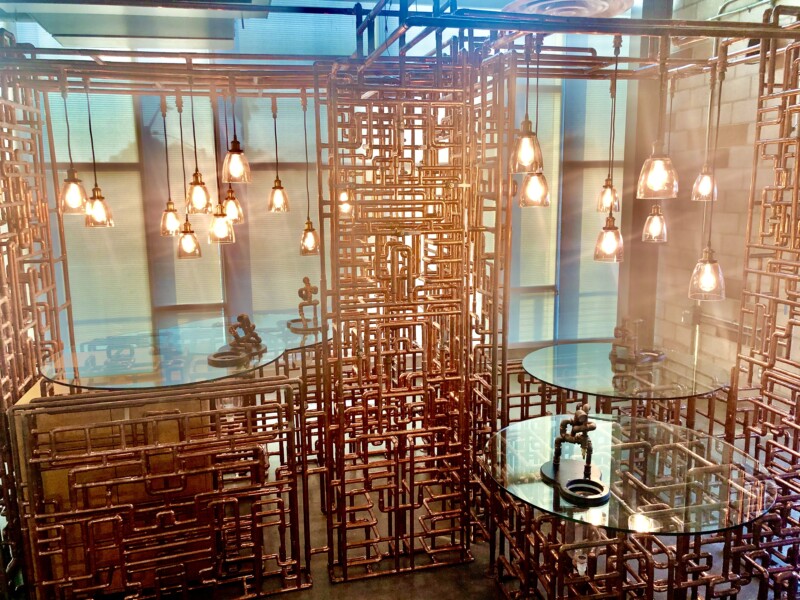
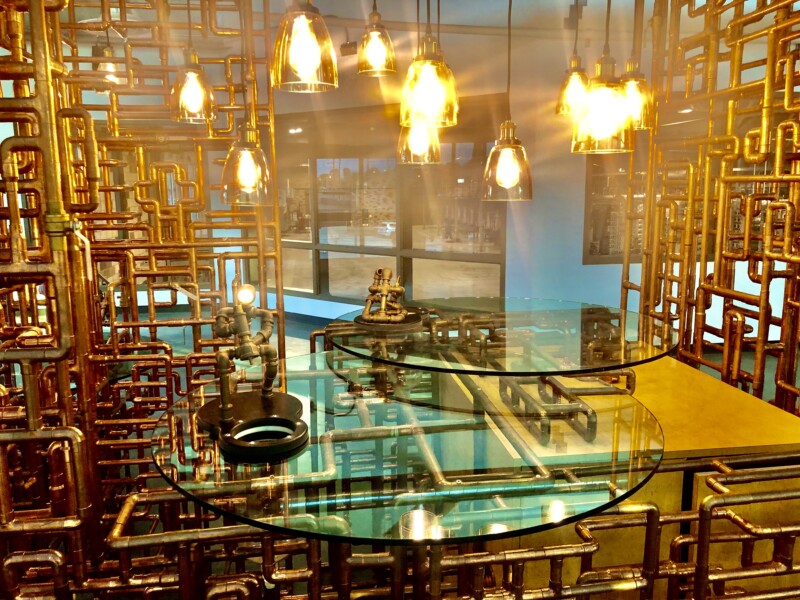
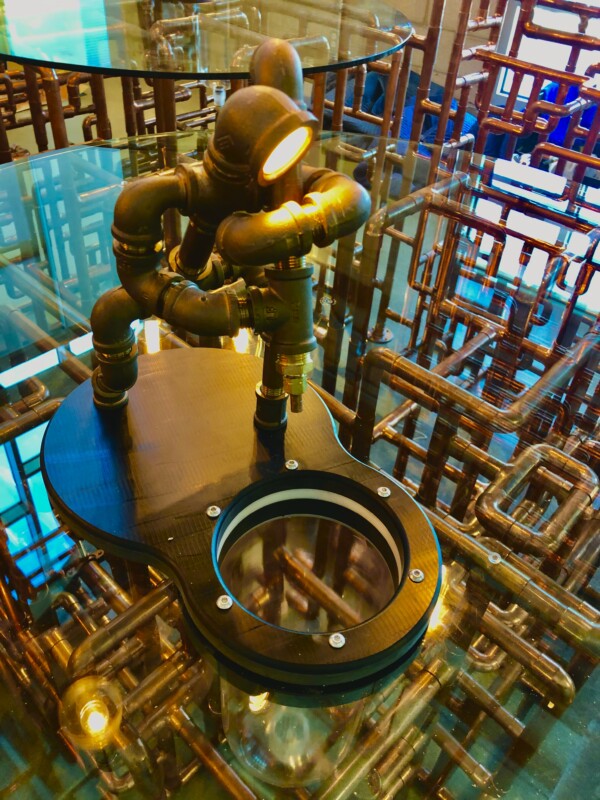
Here is the client describing what goes on at the Education Center.
And this video shows the virtual tour of the entire facility.
